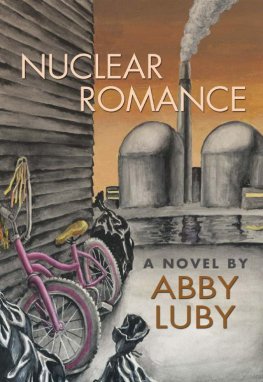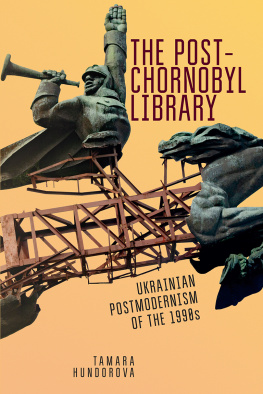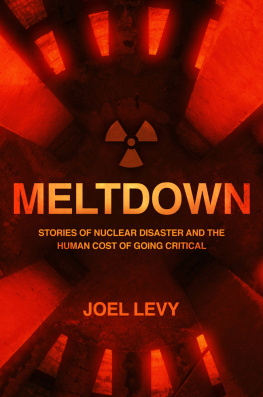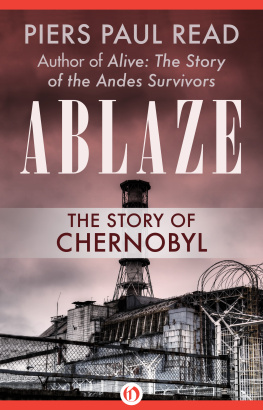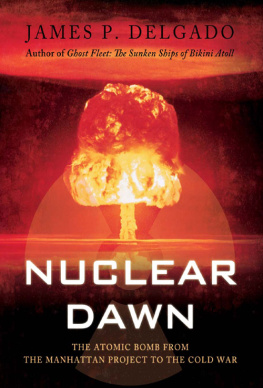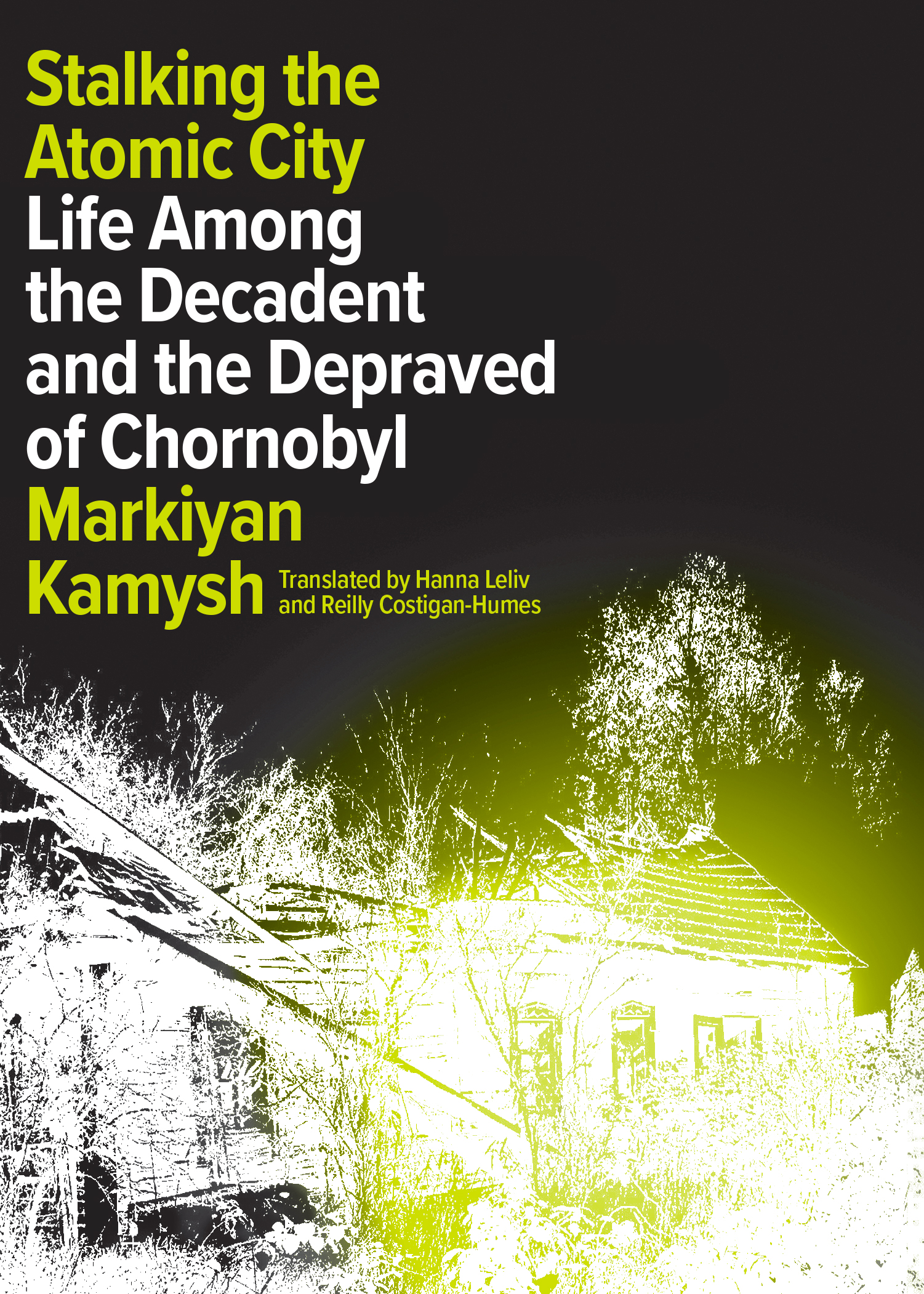Contents
Guide
Pagebreaks of the print version


Originally published in the Ukranian language as (A Stroll in the Zone) Nora-Druk, 2015.
Published by arrangement with Agence Littraire Astier-Pcher.
Translation 2022 by Hanna Leliv and Reilly Costigan-Humes
Photographs 2022 by Markiyan Kamysh
All rights reserved. Copying or digitizing this book for storage, display, or distribution in any other medium is strictly prohibited.
For information about permission to reproduce selections from this book, please contact .
Photographs by Markiyan Kamysh, provided courtesy of the author.
Astra House
A Division of Astra Publishing House
astrahouse.com
Library of Congress Cataloging-in-Publication Data
Names: Kamysh, Markiyan, author. | Leliv, Hanna, translator. | Costigan-Humes, Reilly, translator.
Title: Stalking the atomic city : life among the decadent and the depraved of Chornobyl / Markiyan Kamysh ; translated by Hanna Leliv and Reilly Costigan-Humes.
Other titles: A Stroll in the Zone. English | Life among the decadent and the depraved of Chornobyl
Description: First edition. | New York : Astra House [2022] | "Originally published in the Ukranian language as A Stroll in the Zone, Nora-Druk Publishers 2015." | Summary: "Stalking the Atomic City is a rare portrait of the dystopian reality that is Chornobyl. Focusing on the site as it is today, Markiyan Kamysh introduces us to the marginalized people who call the Exclusion Zone their home, providing a haunting account of what total autonomy could mean in our growingly fractured world."--Provided by publisher.
Identifiers: LCCN 2021050590 (print) | LCCN 2021050591 (ebook) | ISBN 9781662601279 (hardcover) | ISBN 9781662601286 (epub)
Subjects: LCSH: Chernobyl Nuclear Accident, Chornobyl, Ukraine, 1986. | Dark tourism--Ukraine--Chornobyl. | Chornobyl (Ukraine)--Description and travel. | Abandoned buildings--Ukraine--Chornobyl Region. | Extinct cities--Ukraine--Chornobyl Region.
Classification: LCC DK508.95.C545 K36 2022 (print) | LCC DK508.95.C545 (ebook) | DDC 947.7/709048--dc23/eng/20211214
LC record available at https://lccn.loc.gov/2021050590
LC ebook record available at https://lccn.loc.gov/2021050591
First edition
Design by Richard Oriolo
Map illustration by Jake Coolidge
Map source data OpenStreetMap contributors, openstreetmap.org/copyright
To Flamingo
Contents
The Downpour
BRIMMING WITH THE OPTIMISM OF UTOPIAN slogans and the motherfucking grotesque of Soviet supergraphics, we were building a Dream. And in pursuit of it, we stumbled upon the Cornucopiathe energy of the peaceful atom, the panacea for the national economy, and the beacon guiding us on the path toward a bright red Communist tomorrow. Thrilled by our own might, with an undimmed belief in all that is best, we were building nuclear power stations all across the USSR.
One of the most powerful ones was called Chornobyl. Its satellite town soon grew rapidly, its neat apartment blocks towering in their exemplary excellence, enormous slogans flowing high, proud, on the rooftops, and boisterous children running around cozy playgrounds.
A supermarket and a restaurant opened in town, and ads like Looking to exchange my apartment in Odessa for one in Prypyat no longer surprised anyone. In the wilderness of the Polissya region, the Atomic City looked like something out of a sci-fi novel promising rapid growth, further improvements, and outrageous opportunities. They even planned to build a promenade with bridges, street lights, and musical entertainment. They already started to lay the foundation of new power plant units, the apotheosis of joy and happiness looming on the horizon.
Until things got fucked, and nuclear reactor No. 4 blew the hell up. The area by Chornobyl lit up like the Wormwood star and turned into a poisonous emerald in the precious crown of Polissya. The cruel hangover of reality after long years of sweet dreams. The law of the pit: no matter how long you climb, youll fall back to the bottom in an instant.
However, brave firefighters put out the fire in the reactor, and valiant helicopter pilots showered the hellish crater with lead and boron. Desperate liquidators with pure hearts cleared the most polluted debris in the world, built the sarcophagus, and then left.
They left after theyd picked up their doses of radiation, their health problems, their cancer, their category A and B liquidator certificates, and so on down the list. Their children acquired the privilege to hang out at summer camps for free and to go by the nickname Chornobylite at school. The country got a piece of land as big as Luxembourg where people were forbidden to live.
The town of Prypyat and its surroundings were evacuated immediately. The Exclusion Zone was fenced off by barbed wire and patrolled by watchful soldiers. They raced around like predators on their armored vehicles in search of looters, but when the turbulent 1990s exploded with even greater force than the reactor, the Zones borders loosened.
Thats when the first illegals appeared. Haggard drunkards would steal pickled food from the cellars in the villages just outside the Zone and run away from the patrol guards only to come back in a week, get caught, and be thrown in jailno probation. Prypyat was packed with daredevils, bums, deserters, looters, and fugitives. They hid in the villages for months, munching on rotten apples and dreaming of hunkering down until all the troubles of the world melted away. It was then that the Zone turned into that dangerous place often depicted in todays tabloids.
You could run into some hippies, too. Stories about flower children sporadically appeared in the newspapersthe police would catch them laughing and swimming in a river and kick them out with a stern warning: Dont you ever come back, ever. Hooligans from the capital dropped by, too, to loot clocks from Prypyat apartments and peddle them at the flea market on Andriyivskyy Descent. Theyd shoot up drugs and carry guns. Then the hooligans left. They left behind their meth trips like a whirlwind of ashes and became family men, completely ordinary: small business owners and loving parents of kids who are now littering your social media feeds with pictures of their breakfasts.
There were loners, too. They never left any footprints and drank good brandy. They fished in the rivers just to see the sun in the clear skythey didnt give a damn that no one lived there and that they could be arrested. Thats how it went until the generation the same age as the explosion grew up. To them, the Zone became a land of tranquility and frozen time.
I am one of that generation.
WHAT IS THE Chornobyl Zone today? For some people, its a horrible memory of their half-forgotten childhood, of their happy Soviet youth, when, in a matter of days, their life shattered into pieces, and they and all their neighbors scattered, hopping on the evacuation buses to search for new homes. For others, the Chornobyl Zone is a pile of radioactive shit cleared away in May 1986. For some, its a terra incognita full of myths about zombies and soldiers riding dark green armored vehicles. For others, its authorized tours with greedy vendors delivering lofty speeches and making money on spaced-out tourists. For some, its the backdrop of a popular computer game about macho men with Kalashnikov rifles who scarf down canned meat and bandage their gunshot wounds amid the fog of early-morning swamps. And still others believe that things are all bad there and see the Zone as a site from the movie


